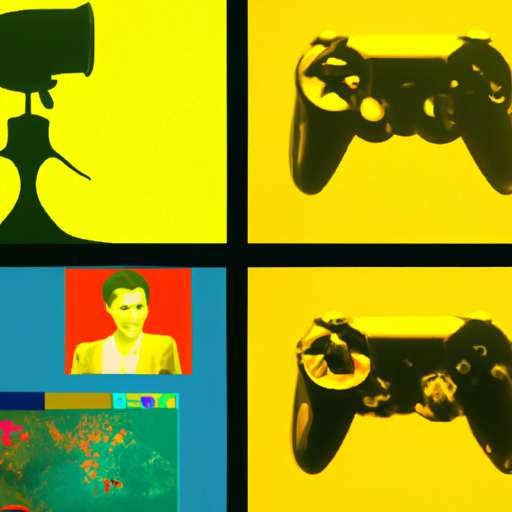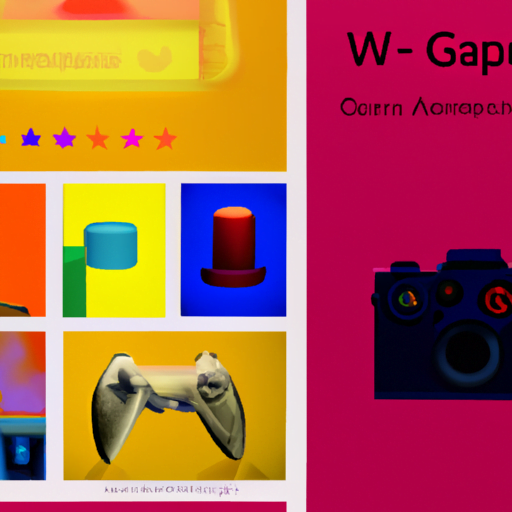
-
Table of Contents
- Gamifying User Experience: Incorporating Game Elements in Design
- The Power of Gamification:
- Examples of Successful Gamification:
- 1. Duolingo:
- 2. Nike+ Run Club:
- 3. Starbucks Rewards:
- Key Elements of Gamification:
- 1. Clear Goals and Objectives:
- 2. Progression and Rewards:
- 3. Competition and Collaboration:
- 4. Feedback and Progress Tracking:
- 5. Personalization and Customization:
- Implementing Gamification in Design:
- 1. Understand Your Users:
- 2. Start with Small Iterations:
- 3. Integrate Game Elements Seamlessly:
- 4. Provide Meaningful Rewards:
- 5. Iterate and Improve:
Gamifying User Experience: Incorporating Game Elements in Design

Introduction:
In today’s digital age, user experience (UX) has become a critical factor in the success of any product or service. As users become more discerning and demanding, businesses are constantly seeking innovative ways to engage and retain their audience. One such approach that has gained significant traction is gamification – the integration of game elements into non-game contexts. By incorporating game mechanics and design principles, companies can enhance user engagement, motivation, and overall satisfaction. In this article, we will explore the concept of gamifying user experience, its benefits, and how it can be effectively implemented in design.
The Power of Gamification:
Gamification taps into the innate human desire for competition, achievement, and rewards. By leveraging these psychological motivators, businesses can create a more immersive and enjoyable user experience. Let’s delve into the key benefits of gamifying user experience:
- Increased Engagement: Games are inherently engaging, and by incorporating game elements into design, businesses can capture and hold users’ attention for longer periods. This increased engagement leads to higher user satisfaction and a greater likelihood of repeat usage.
- Enhanced Motivation: Games provide clear goals, challenges, and rewards, which can significantly boost user motivation. By incorporating these elements into non-game contexts, businesses can motivate users to complete tasks, explore features, and achieve desired outcomes.
- Improved Learning and Retention: Games often involve learning new skills and concepts. By gamifying user experience, businesses can create interactive and immersive learning environments that facilitate knowledge acquisition and retention.
- Behavioral Change: Gamification can be a powerful tool for influencing user behavior. By rewarding desired actions and providing feedback, businesses can encourage users to adopt positive behaviors, such as exercising regularly or saving money.
- Increased Data Collection: Gamified experiences can provide valuable data on user behavior, preferences, and performance. This data can be leveraged to gain insights, personalize experiences, and make data-driven decisions.
Examples of Successful Gamification:
Several companies have successfully implemented gamification to enhance user experience. Let’s explore a few notable examples:
1. Duolingo:
Duolingo, a language-learning platform, gamifies the process of learning a new language. Users earn points, unlock levels, and compete with friends, making the learning experience more enjoyable and motivating. As a result, Duolingo has attracted over 300 million users worldwide.
2. Nike+ Run Club:
Nike+ Run Club is a running app that gamifies the running experience. Users can set goals, track their runs, and compete with friends. The app provides real-time feedback, achievements, and rewards, encouraging users to stay active and improve their performance.
3. Starbucks Rewards:
Starbucks Rewards is a loyalty program that gamifies the coffee-buying experience. Users earn stars for each purchase, which can be redeemed for free drinks and other rewards. The program incentivizes repeat purchases and encourages customers to explore new products.
Key Elements of Gamification:
Successful gamification requires careful consideration of various elements. Let’s explore the key components that contribute to an effective gamified user experience:
1. Clear Goals and Objectives:
Games provide clear goals and objectives that guide users’ actions. In a gamified user experience, it is essential to define clear goals and communicate them effectively to users. This clarity helps users understand what they need to accomplish and provides a sense of purpose and direction.
2. Progression and Rewards:
Progression and rewards are crucial elements in gamification. Users should feel a sense of progress as they complete tasks or achieve milestones. Rewards, such as badges, points, or virtual currency, provide tangible recognition and motivate users to continue engaging with the product or service.
3. Competition and Collaboration:
Competition and collaboration are powerful motivators in gamification. Leaderboards, challenges, and multiplayer features can foster healthy competition among users, driving engagement and encouraging them to outperform others. Additionally, collaborative elements, such as team-based challenges or social sharing, can enhance the sense of community and create a more immersive experience.
4. Feedback and Progress Tracking:
Regular feedback and progress tracking are essential in gamified experiences. Users should receive timely feedback on their performance, progress towards goals, and areas for improvement. Progress tracking mechanisms, such as progress bars or level indicators, provide a visual representation of users’ advancement, keeping them motivated and engaged.
5. Personalization and Customization:
Personalization and customization options allow users to tailor their experience to their preferences and interests. By providing choices and allowing users to customize their avatars, profiles, or environments, businesses can create a more immersive and engaging experience that resonates with individual users.
Implementing Gamification in Design:
When incorporating gamification into design, it is crucial to consider the following best practices:
1. Understand Your Users:
Before implementing gamification, it is essential to understand your target audience. Conduct user research, gather feedback, and identify their motivations, preferences, and pain points. This understanding will help you design game elements that align with users’ needs and desires.
2. Start with Small Iterations:
Implementing gamification can be a complex process. Start with small iterations and test the effectiveness of game elements before scaling up. This iterative approach allows you to gather user feedback, make improvements, and refine the gamified experience based on real-world usage.
3. Integrate Game Elements Seamlessly:
Game elements should be seamlessly integrated into the overall user experience. Avoid adding gamification as an afterthought or as a separate module. Instead, ensure that game mechanics and design principles are woven into the core functionality of the product or service.
4. Provide Meaningful Rewards:
When designing rewards, ensure they are meaningful and aligned with users’ goals. Tangible rewards, such as discounts, exclusive content, or access to additional features, can provide a sense of value and motivate users to engage further. Additionally, consider incorporating intrinsic rewards, such as recognition or a sense of accomplishment, which can be equally powerful.
5. Iterate and Improve:
Gamification is not a one-time implementation; it requires continuous iteration and improvement. Monitor user engagement, collect data, and analyze user behavior to identify areas for enhancement. Regularly update and refine the gamified experience to keep it fresh, relevant, and aligned with users’ evolving needs.</p
